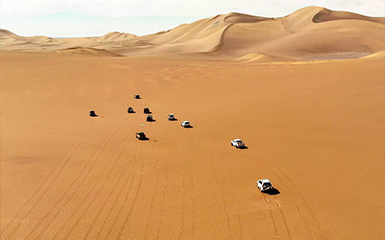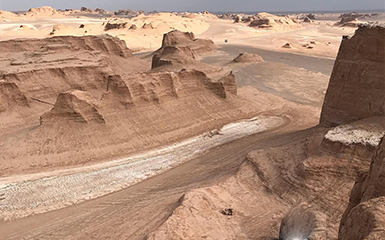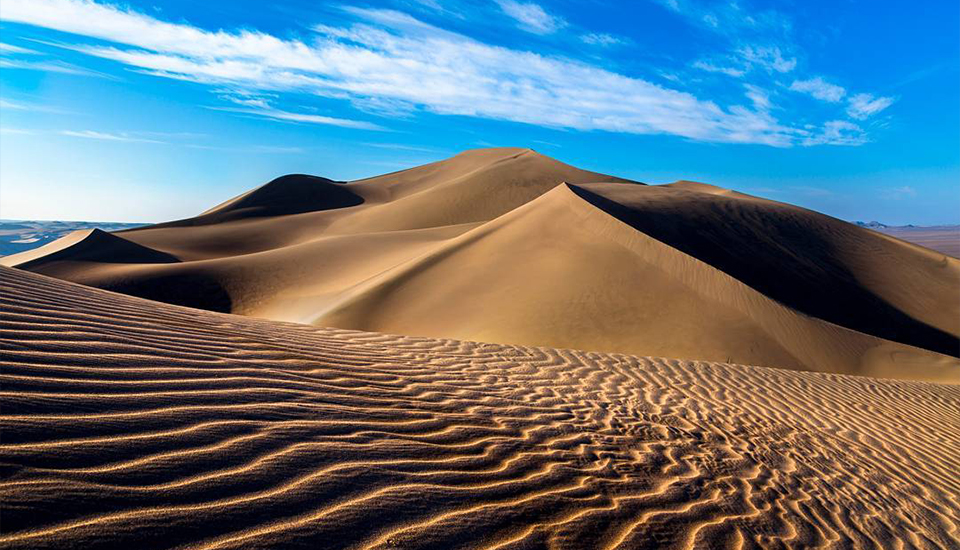Ardabil
Arg-e Bam
Abyaneh
Babak Castle
Behistun
Chogha Zanbil
Dasht-e Lut
Golestan Palace
Isfahan
Imam mosque
Kashan
Kharanaq
Mashhad
Masuleh
Meymand
Pasargadae
Naqsh-e jahan
Naqsh-e Rostam
Persepolis
Rayen Citadel
Saint Thaddeus
Saint Stepanos
Shiraz
Shushtar
Sultan Amir Ahmad
Tabriz
Takht-e Soleyman
Tehran
Tower of Silence
Yazd
Iran is a part of the Afro-Asiatic desert belt that starts from Cape Verde Islands in West Africa and extends through Mongolia to the Chinese capital Beijing. Longitudinally prominent spots on the map (parallel to the mountain range) are dried desert lakes that cover up to 300 kilometers to the south. In deserts near the tropics, most of the precipitation falls on the mountainous regions. In this respect, the Lut Desert is accepted as a non-living region.
A truly extraordinary site, the Lut desert or Dasht-e-Lut is understood as the cradle of spectacular phenomena. Between June and October, powerful winds sweep across it, carrying sediment and causing wind erosion on a prodigious scale. As a result, the area presents bewildering examples of relief. You will contemplate a series of parallel ridges and furrows extending over more than 150 km in length and 75 meters in height!
In the arid desert of Lut, another phenomenon as unique as it is paradoxical attracts all visitors who pass through it: the presence of water points. There are hundreds of water wells dug by the local people 2000 years ago in the Lut Desert. Each of these wells is about 50 meters deep and wide enough for a person to pass through. There is a running water at the bottom of the well, and those who dig the well have built narrow tunnels to reach the source of this water. The eastern part raises a plateau covered with salt marshes. They flow majestically in their bed. From one oasis to another, you will be able to encounter rare shrubs, the most tenacious grasses in the plant world!
Significant areas of the desert are occupied by takyrs, as well as solonchaks, in the south of the desert there are vast massifs of sand. In the south, at the eastern foot of the Kuhbenan ridge, within the desert, there is a drainless saline depression Nemekzar, in the lower part of which, during the flood of rivers, a shallow lake is formed in spring. Physical weathering has created numerous "pillars", "mushrooms" and similar forms.
The absolute maximum temperature on Earth was recorded in the Dasht-e Lut desert in 2005 (70.7 °C). Like a paradox, the Shur River flows through the desert, which does not dry out even in dry years.


